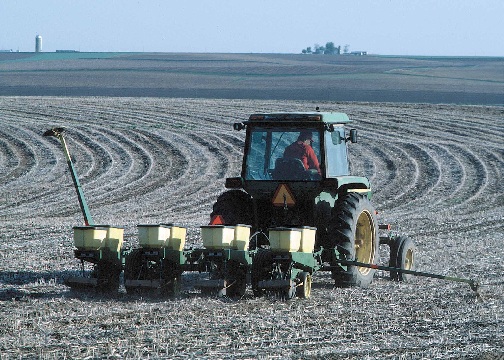Competency Area 4: Soil health and compaction
PO 38. Describe approaches for remediation of soil compaction, and understand when they are are appropriate.
- Deep tillage
- Organic matter additions and cover crops
- Reduced tillage
Deep tillage (subsoil compaction)
Deep tillage can help to remediate subsoil compaction and can break through plow pans. The effects of deep tillage are usually short lived unless management adopts strategies to avoid further compaction, and to make soil resist compaction better.
Organic matter additions and cover crops (plow layer compaction; subsoil compaction when using deep-rooted cover crops)
Organic matter can make the soil resist compaction better, whereas growing cover crops in the fall and winter when the soil is moist can help create pathways for the roots of summer crops to follow. The roots also make pores that improve infiltration and aeration.
Reduced tillage (plow layer compaction)
Shallow tillage in the top 0-12 inches can help to remediate rutted soil and to address surface compaction. The effects of compaction are not typically completely eliminated and follow-up needs to make sure compaction is not caused again.

No-till planting
Photo courtesy of NRCS
Quick Links
- Competency Area 1: Basic soil properties
- Competency Area 2: Soil hydrology AEM
- Competency Area 3: Drainage and irrigation AEM
- Competency Area 4: Soil health and compaction
- Competency Area 5: Soil conservation AEM
- Competency Area 6: Watershed hydrology AEM
- Competency Area 7: Non-point source pollution AEM
- Competency Area 8: Concentrated source pollution AEM
- Competency Area 9: Conservation planning AEM
